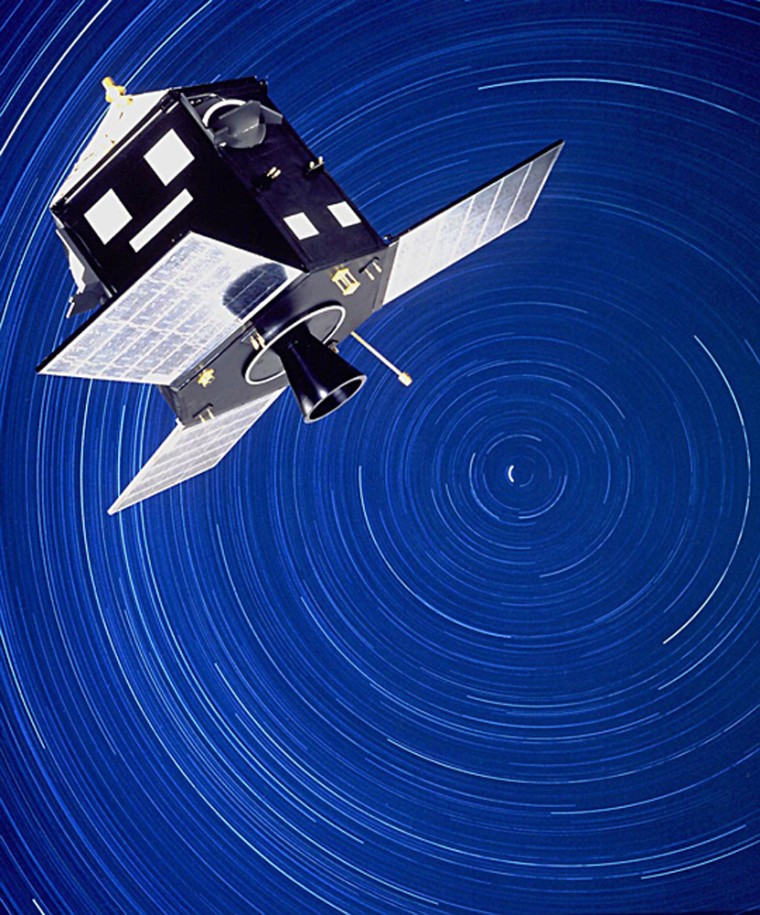The best 3-D map of the cosmos just got better, thanks to an astronomer's years of cleaning up old satellite data.
The fresh look at almost 118,000 stellar bodies, known as the Hipparcos catalogue, boosts the astrometric database's accuracy by up to five times and effectively doubles its useful information.
"This catalogue provides extremely fundamental, direct measurements in astronomy, such as distances, masses and kinematics of stars and star clusters," said Floor van Leeuwen, an astronomer at the Institute of Astronomy at University of Cambridge in the U.K. who single-handedly filtered the data.
Van Leeuwen's updated version of the catalogue is detailed in part of a new book called "Hipparcos — The New Reduction of the Raw Data."
In 1989, the European Space Agency launched Hipparcos — the High Precision Parallax Collecting Satellite — to map out some of the brightest stars and star clusters in the cosmos.
Van Leeuwen said the satellite's data may be old, but its accuracy is still impressive. "If the satellite was on Earth, it would be able to see a child on the moon take a step," van Leeuwen told SPACE.com.
The satellite scanned the sky in two directions for 4 years, allowing astronomers to calculate the distance from Earth to each stellar object by using the parallax method-or observing an object from two points in space, when Earth is in different points on its orbit around the sun. Our brains, for example, use the same principle to merge information from two eyes to give us depth perception.
"You're essentially triangulating the entire sky," he said of computing Hipparcos' data. Complicating the extremely precise calculations, however, was the satellite's off-kilter orbit around Earth caused by a failed rocket.
Van Leeuwen said comparing both data sets amounts to a dizzying amount processing — especially with errors present.
Nasty number crunching
Red flags in the catalogue-such as a 10 percent difference in calculated distance to the Pleiades star cluster-set astronomers off to the errors, but they struggled to understand them. Scientists eventually showed that fast-moving dust grains whacking into the spacecraft could vibrate it and throw off measurements. "Pings" in satellite material caused by solar heating and contraction, similar to the sounds made by a cooling car engine, were also isolated.
With the information in hand, van Leeuwen decided to sit down at his computer and painstakingly filter through the 118,000 data points, then re-crunch the numbers.
"It took me about two-and-a-half years in total, and I found about 1,600 of these events," he said. "When I took the events out of the data, the accuracy increased by a factor of five."
Van Leeuwen said his personal computer took about three to four weeks to process one iteration, or "rough draft," of the cleaned-up stellar map-and 15 total iterations were needed to create the complete final draft. But the new version, he said, should help astronomers better understand the motions of the cosmos as well as inform the design of Gaia-the next-generation astrometric satellite.
The ESA expects Gaia to observe about 1 billion stellar objects, or about 8,300 times more than Hipparcos did in the early 1990s.
"It's absolutely frightening to think about the data that will be coming down from Gaia," van Leeuwen said of the satellite, which is scheduled to launch in 2011. "The world's best computers currently can't handle that kind of data, so we hope we'll be able to in about 5 years' time."
